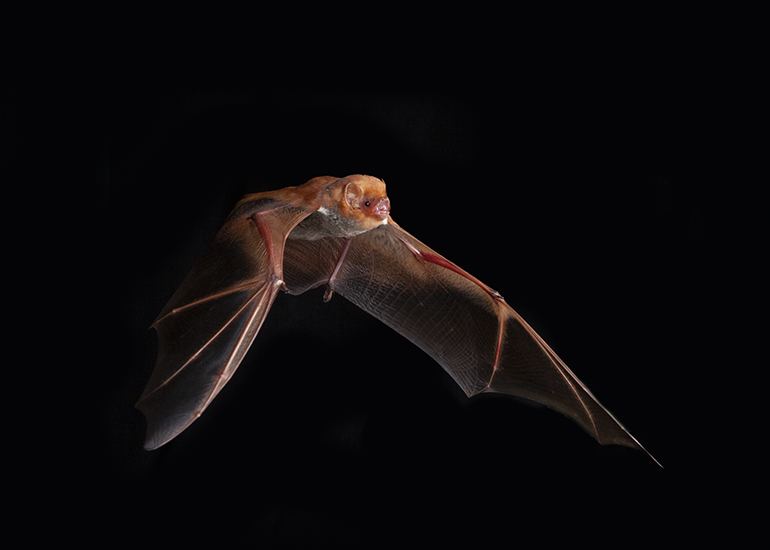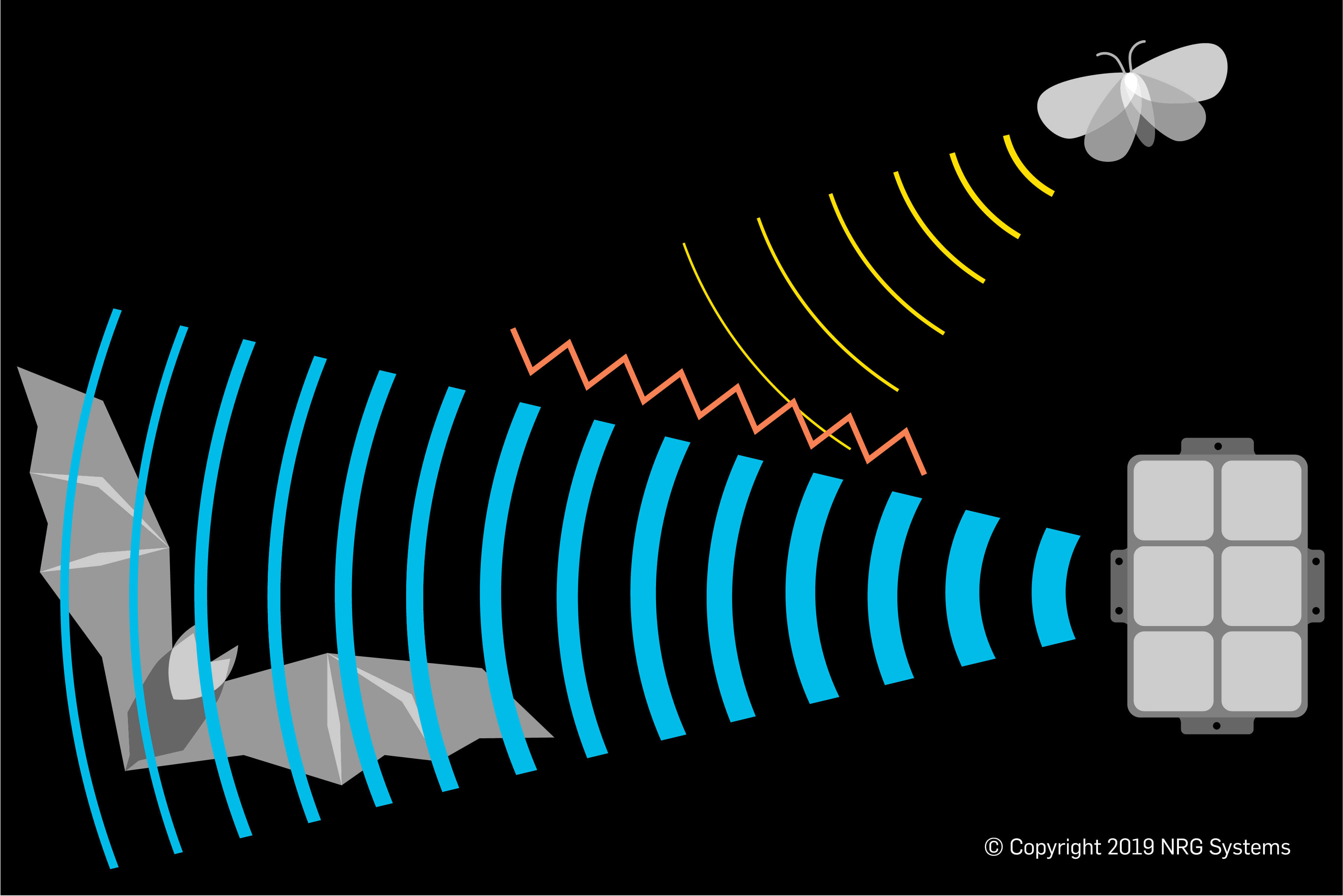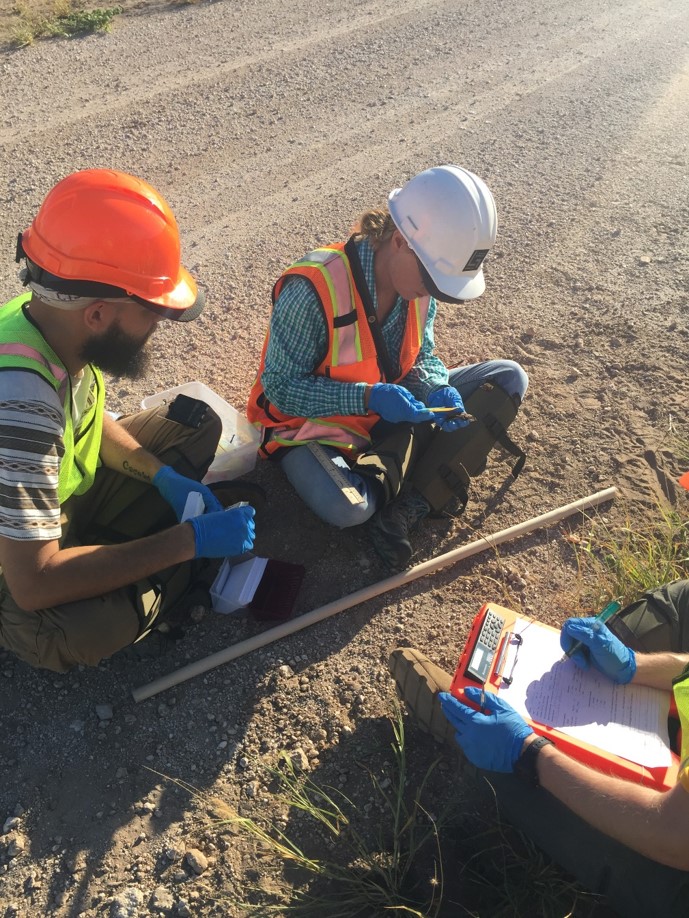
An echolocating bat in flight. (Image courtesy of Bruce Taubert)
Globally, bat populations are in decline. According to Bat Conservation International, the International Union for the Conservation of Nature has deemed 22 bat species as “critically endangered,” meaning they face an imminent risk of extinction. Fifty-six other bat species are endangered and more than 100 are considered vulnerable.
There are numerous reasons for recent downturns in bat populations, including habitat reduction and white-nose syndrome, a fungal disease that has wreaked havoc on hibernating bat populations in North America. Bat fatalities are also occurring at operating wind farms. Although the underlying causes of bat fatalities at wind turbines remain unknown, the wind energy sector has made bat conservation a top priority.
The wind industry has been diligent in its search for solutions, with curtailment taking the lead as the most widely used tactic to reduce bat take at wind farms.
“More than anything, wind industry professionals are passionate about the environment,” said Tim Hayes, the Environmental Director at Duke Energy. “We go to work every day driven by a mission to reduce the impacts of global climate change and we certainly do not want to do that at the expense of biodiversity. While curtailment is an effective method for reducing bat take, it is important to find a balance between producing renewable wind energy and sustaining the environment.”
Deterring bats
In 2015, NRG Systems, Inc., a Vermont-based company that designs and manufactures technologies for all stages of wind and solar development, began developing an ultrasonic Bat Deterrent System. The goal was to create a tool for minimizing bat take at turbines without affecting energy production.
NRG’s deterrent system is based on “jamming” the echolocation capabilities of bats, which they rely on for communicating, foraging, and orienting themselves. When switched on, the Bat Deterrent System emits an ultrasonic acoustic field in the same range as bats’ natural calling frequencies. This interferes with their ability to receive and interpret their own echolocation calls, which creates disorienting airspace that is difficult to navigate. By jamming their echolocation systems in such a way, bats are discouraged from entering the treated airspaces and roosting location, effectively pushing them out of dangerous territories such as the rotor-swept area of a wind turbine.

NRG’s Bat Deterrent Systems emit an ultrasonic acoustic field in the same range as bats’ natural calling frequencies. When a bat enters the airspace where the deterrent units are operating, the ultrasound from the deterrent units (blue) will be louder than the echo return the bat is listening for (yellow). This effectively “jams” the bat’s ability to hear its own return. If the bat cannot hear the echoes, it is unable to successfully forage and orient itself, so it chooses airspace without the ultrasonic noise and away from the turbine’s rotor swept zone.
NRG’s Bat Deterrent System features multiple Bat Deterrent Units (BDU), which are the ultrasonic speakers mounted to the outside of the nacelle, as well as a Deterrent Unit Controller (DUC), which tells the speakers when to turn on and off and provides information to the SCADA system.
The BDUs only create ultrasound in front of the units, much like typical speakers, so multiple units are arrayed near a turbine to provide enough coverage of the rotor-swept area. NRG developed two system configurations:
- With five BDUs on the nacelle of a wind turbine, this configuration is meant for bats with calling frequencies between 20 to 35 kHz.
- An eight BDU configuration places speakers on the nacelle and the turbine tower. It is intended for bats with calling frequencies between 20 to 50 kHz.
It is important to note that the ultrasonic acoustic field is not harmful to bats or other wildlife, dissipates quickly, and is inaudible to humans.
Deterrent testing
The Bat Deterrent System has been trialed at several wind farms across the United States and Canada. In December 2018, NRG released the results of a two-year test at the Los Vientos Wind Energy Facility, a Duke Energy-owned wind farm in Starr County, Texas. The results showed that the system reduced overall bat fatalities at the wind farm by 54% during the second year of testing, proving that the technology is an effective tool for reducing mortality of certain species of bats caused by wind turbines.

Searchers evaluate bat take at the Los Vientos Wind Energy Facility. Image courtesy of Sarah Perry.
The testing at Los Vientos was led by researchers from Texas State University, in partnership with Bat Conservation International, and involved installing Bat Deterrent Systems on 16 of the facility’s 255 Vestas V-110 wind turbines. Eight control and eight treatment turbines were randomly assigned on a nightly basis. The BDUs were switched on well before sunset, when bats emerge for the night, and turned off well after sunrise, after the bats have returned to their day roosts.
Searchers then combed plots with a 100m radius to assess bat take. Sara Weaver, doctoral candidate at Texas State University and biology lecturer at A&M, San Antonio, who led the Los Vientos study, said: “Our results from this robust, two-year study indicate that NRG’s acoustic deterrents significantly reduce Brazilian free-tailed bat and hoary bat fatalities. Based on these results, the technology is a promising tool for reducing bat fatalities at wind turbines.”
NRG Systems’ Bat Deterrent System is commercially available in North America. Testing this year will focus on European countries to ensure that the technology is effective on local bat species, but there is no biological reason to think that similar results cannot be achieved in this region.
“We are thrilled to be able to provide wind operators with a powerful new conservation tool to reduce bat mortality beyond what is economically feasible with curtailment alone,” said Brogan Morton, Senior Product Manager at NRG Systems. “We can’t wait to see what effect this has on wildlife conservation as well as wind energy production in the future.”
Filed Under: News




